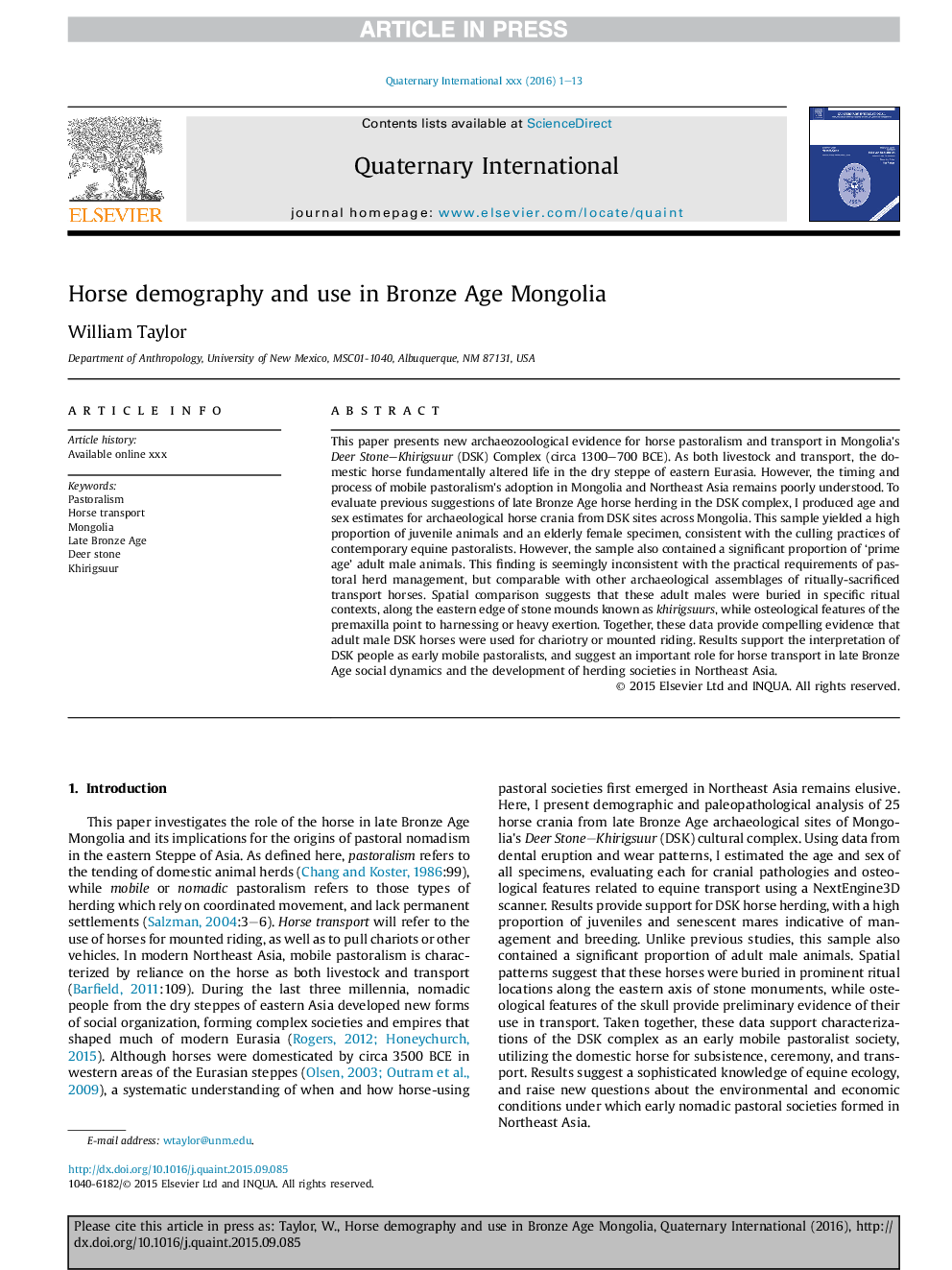| Article ID | Journal | Published Year | Pages | File Type |
|---|---|---|---|---|
| 5113558 | Quaternary International | 2017 | 13 Pages |
Abstract
This paper presents new archaeozoological evidence for horse pastoralism and transport in Mongolia's Deer Stone-Khirigsuur (DSK) Complex (circa 1300-700Â BCE). As both livestock and transport, the domestic horse fundamentally altered life in the dry steppe of eastern Eurasia. However, the timing and process of mobile pastoralism's adoption in Mongolia and Northeast Asia remains poorly understood. To evaluate previous suggestions of late Bronze Age horse herding in the DSK complex, I produced age and sex estimates for archaeological horse crania from DSK sites across Mongolia. This sample yielded a high proportion of juvenile animals and an elderly female specimen, consistent with the culling practices of contemporary equine pastoralists. However, the sample also contained a significant proportion of 'prime age' adult male animals. This finding is seemingly inconsistent with the practical requirements of pastoral herd management, but comparable with other archaeological assemblages of ritually-sacrificed transport horses. Spatial comparison suggests that these adult males were buried in specific ritual contexts, along the eastern edge of stone mounds known as khirigsuurs, while osteological features of the premaxilla point to harnessing or heavy exertion. Together, these data provide compelling evidence that adult male DSK horses were used for chariotry or mounted riding. Results support the interpretation of DSK people as early mobile pastoralists, and suggest an important role for horse transport in late Bronze Age social dynamics and the development of herding societies in Northeast Asia.
Keywords
Related Topics
Physical Sciences and Engineering
Earth and Planetary Sciences
Geology
Authors
William Taylor,
